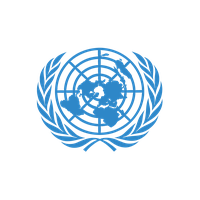
International day for the Abolition of Slavery
Every December 2nd.
Raising awareness about modern day slavery and its eradication.
About the event
Whilst the transatlantic slave trade was outlawed in 1807 and slavery is prohibited internationally by Article 4 of the Universal Declaration of Human Rights, there are still an estimated 12.3 million people across the world in slavery today, forced to work for little or no pay.
This day, inaugurated by the UN, marks the date of adoption of the Convention for the Suppression of the Traffic in Persons and of the Exploitation of the Prostitution of Others in 1949. This is an important day to think about how we can cooperate internationally to eradicate slavery once and for all.
How to approach it
This is a day to approach carefully given the potential of this topic to cause worries. Nevertheless, it is important that students, especially in older years, are aware that slavery is not just a historical issue. Specifically, it should be highlighted that modern slavery is often more covert and hard to spot - this means that it can occur in our own communities and in the supply chains of products we buy.
As with other serious topics, scary details should be avoided here. Instead, engage your students in a conversation about the basics of what modern slavery in the UK might be like. The recently revealed life story of Sir Mo Farah is a great example for this. Farah was trafficked from Somalia and held against his will in London by a woman he had never met. In the UK Farah was forced to work as a domestic servant for another family before being helped by his teachers to gain British citizenship and new foster parents.
Through this story you can show that modern slavery may look very different to historical kinds. Ask: given this example, where might other instances of modern slavery occur? Good examples are in factories, in farms and in small businesses. Show in particular that this can happen anywhere in the world, especially in places with lower labour protections. Another key question to ask is: how can we recognise instances of this in our own community? Good ideas might be strong community care structures like well trained teachers, social workers and youth clubs. Another might be individuals looking for tell tale signs or checking up on people when things don’t seem right.
Organised by
United Nations

Conversation starter
When Britain ended slavery, the government paid out money as compensation to the people affected, but they didn't pay it to the people who had been enslaved - instead, they paid the money to the slave owners. What does this tell us about racism, even after slavery was abolished? If everyone valued human wellbeing over money would slavery exist?




